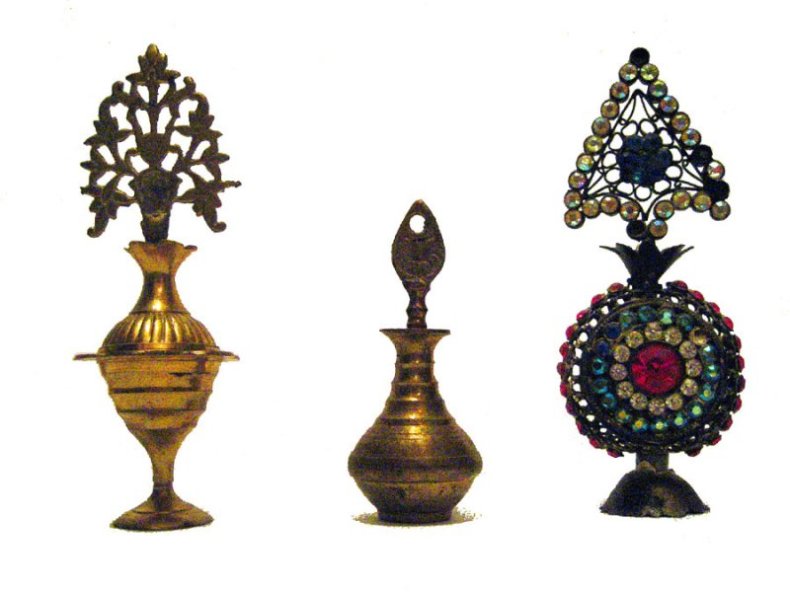Channel: ARY digital
Timings: Every Friday at 8 pm
Writer: Fasih Bari Khan
Director: Mazhar Moin
First broadcast on: February 10, 2012
Cast:
Hina Dilpazeer Khan as Shakooran or Amma or Quddusi Sahab ki bewa, the controlling matriarch of three daughters and a son
Hina Dilpazeer Khan as Badrika Jehan, a school teacher who financially supports her family and is desperate to get married and leave her family
Hina Dilpazeer Khan as Rooh Afza, a buck-toothed with the spirit of a Pakistani film heroine and the tenant of the Quddusi’s
Hina Dilpazeer Khan as Bengali Baji, a black magician
Shehnaz Parvez as Khajista Jehan, a homeopath, her mother would have preferred that she become a ward boy!
Badar Khalil as Aqeela bhabhi, a stinky matchmaker cum gossip khala
Uroosa Siddiqui as Shagufta Jehan, the only sister with no career except for having a keen eye on observing the funniness in everything even in morbid situations
Waqar Hussain as Wudud Ahmed, the only brother of Khajista, Badrika and Shagufta, who cooks for the women of his household and who is caught up in the unfortunate battle between his masculine and feminine side
EPISODE 1
There is a reason why some women remain unmarried and according to Quddusi Sahab ki Bewa (QSKB), it’s because the mothers don’t want to for their source of income will dry up and they will have a hard time running their household. In this era of economic recession this is a valid concern and this biting and almost savage serial highlights this fact through its wonderfully sketched characters played brilliantly by its talented cast. What also stands out in this serial is the liberal usage of unheard mohavaras (proverbs or sayings) that makes the watching of this serial essential in this day and age.
In the introduction to her book: Dilli ki Khwateen ki Kahavatain aur Mohavray, Shaista Suhrawardy Ikramullah says that there was a time once that the conversations of women of yore would be incomplete without the usage of a proverb or a saying. She further explains that these sayings and proverbs were loaded with sarcasm and acerbity that was a form of outlet of expressing their frustrations. In Urdu language this is known as ta’na which literally means to wound someone. Daughters-in-law, sisters-in-law and second wives were usually the target for these ta’nas but daughters were treated with the milder versions so that they were taught the niceties of life through these sayings.
Sayings/proverbs/muhavaras used in first episode of QSKB:
Kaheen ki mitti kaheen ka rodha
Paan main thee na kunba joda
Bain na kooda koodee kaun
Yeh tamasha dekhay kaun
Muflisi main ata neela
Old-fashioned words used in first episode of QSKB::
Domnee
Kuttama
Luthree
Words coined in first episode of QSKB:
Kaanee Dajjalnee (one-eyed anti-christ!)
Khabeesan
Besides the language it is the constant referencing of Pakistani film songs especially by the wonderful crooner Naheed Akhtar that makes QSKB an engaging watch.
Songs in first episode of QSKB:
Bijli bhari hai meray ang ang main
Joh mujh ko choolay ga woh jal jayega
Film: Koshish
Singer: Naheed Akhtar
Original song and its link:
———
Meray sapnoun ki rani
Tu hee tu hee
Meray Sapnoun ki rani
——
Garam gulabi sham hai
Tarumba ka rumba
Sab kuch teray naam hai
Tarumba ka rumba
Singer: Naheed Akhtar
—–
Tuturutut tara tara
Bolay yeh dil ka ek tara
Meray humdum pyar ka mausam
Singer: Naheed Akhtar
Original song and its link:
The widespread usage of modern technologies have meant that several items of furniture and clothing that nearly 40 years ago were a part of our lives are no more. In QSKB we see several such pieces in a household that is apparently stuck in a time warp.
Cultural artefacts/references in terms of furniture and clothing in first episode of QSKB:
White gharara
Silver surmadani (kohl canister) 
Silver ughaldaan (spittoon)
Old model radio
Takhat: Shaista Ikramullah Suharwadry explains its best in her book From Purdah to Parliament: “These were raised wooden platforms, covered with an embroidered or woven material, or only with clean white sheets. They had elaborately carved or lacquered legs, very often of silver. On special occasions masnads [=large cushions] would be placed over them. Takhats were always placed against a wall, and had several bolsters scattered over them for one to recline on. The takhat was, literally, the stage of all household activities. Ladies sat there making and eating paan, cutting chalia [=betel-nut], and gossiping. The more industrious ones brought their sewing or embroidery, and stitched their daughters’ trousseau while listening to the gossip. Even shopping was carried on from there, for women vendors brought their goods and spread them at the foot of the takhat. Children also had a corner for themselves, and their toys would be found littered all over it.”
Paandaan (Betel leaves box)
Links to the first episode:
